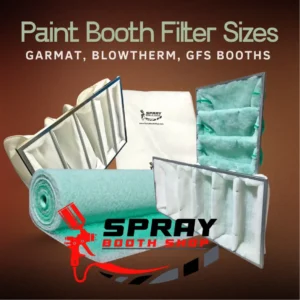
Paint Booth Filter Sizes – Ultimate Guide to Perfect Fits for Garmat, Blowtherm, & GFS
In the world of high-quality finishing, precision is important. From the exact mixture of coatings to the controlled environment of the curing cycle, every detail matters. Yet, one of the most fundamental components of a high-performance paint booth—the filtration system—is often addressed with an approach of “close enough.” This guide dismantles that notion, proving that the exact size of your paint booth filters is not a trivial detail but a critical factor that dictates finish quality, operational efficiency, and environmental compliance. With the Paint Booth Filter market size valued at USD 436.8 Million in 2023 and projected to grow, understanding these nuances is more important than ever for operators of premier finishing systems like Garmat, Blowtherm, and Global Finishing Solutions (GFS).
Mastering Filter Sizing in Paint Booth Performance
A paint booth is more than just an enclosure; it’s a finely tuned piece of industrial finishing equipment designed to control every variable. At the heart of this control is the management of air. The filters are the gatekeepers of this system, and their size is the key to that gate.
Why “Near Enough” Isn’t Good Enough: The Impact of Precise Fits
A perfectly sized filter ensures a complete seal within its holding frame. This seal forces all incoming and outgoing air through the filter media, guaranteeing maximum filtration. Even a small gap of a quarter-inch can allow a significant volume of contaminated air to bypass the filter, compromising the entire system. This bypass can introduce dust and debris onto a wet surface or release harmful overspray into the environment. The precision engineering of top-tier automotive paint booths demands an equally precise approach to maintenance components.
The Dangers of Incorrect Filter Sizing
Using incorrectly sized filters introduces a cascade of negative consequences that undermine the performance of your spray booth.
- Undersized Filters: These are the most common culprits. They fit loosely in the frame, creating gaps that lead to air bypass. This results in contaminated air entering the booth, causing defects in the finish, and allows unfiltered overspray to clog exhaust fans and ductwork.
- Oversized Filters: Forcing a filter that is too large into a frame can cause it to buckle, tear, or warp. This also creates unsealed pathways for air to bypass and damages the filter’s structural integrity, reducing its effectiveness and lifespan.
- Restricted Airflow: Both undersized (if they sag and block passages) and oversized filters can impede the designed airflow of the booth. This strains the fan motors, increases energy consumption, and disrupts the delicate air balance required for flawless application and efficient curing. A paint booth is often the most energy-intensive part of a facility, accounting for around 75% of total consumption, making efficient airflow a top priority.
Understanding Your Paint Booth’s Filtration System
To appreciate the importance of size, one must understand the distinct roles of the filters within the overall system. A paint booth’s filtration is a multi-stage process designed to clean the air coming in and capture contaminants going out.
Intake Filters: Your First Line of Defense
Intake filters, often located in the ceiling or an air makeup unit, are responsible for cleaning the air before it enters the spray booth environment. Their primary job is to remove dust, pollen, and other airborne particulates that could otherwise land on a freshly painted surface, causing costly imperfections. A perfect fit is crucial here to prevent any contaminated ambient air from being drawn into the cabin, ensuring a pristine environment for applying coatings.
Exhaust Filters: Protecting the Environment and System
Positioned on the floor or walls, exhaust filters capture paint overspray before the air is vented outside. This protects your equipment, including fans and ductwork, from a buildup of sticky residue and ensures environmental compliance. According to the EPA, all spray booths must have a filter system with at least 98% capture efficiency. This standard is impossible to meet if filters do not fit correctly and allow overspray to escape.
Airflow Styles and Their Influence on Filter Requirements
The design of your spray booth heavily influences its filter needs.
- Downdraft: Considered the gold standard, particularly in automotive paint booths, downdraft systems pull air from ceiling intake filters down through grated floors equipped with exhaust filters. This provides the cleanest environment and requires large, high-efficiency ceiling filters and robust floor filters.
- Semi-Downdraft/Side Downdraft: These designs pull air from the ceiling and exhaust it through filters located in the side or rear walls, offering a balance of performance and construction cost.
- Crossdraft: Air moves horizontally from intake filters at the front of the booth to exhaust filters at the rear. This common industrial design requires perfectly sealed filter banks at both ends to prevent turbulence and contamination.
How to Accurately Determine Filter Sizes for Your Paint Booth
Identifying the correct filter size is a straightforward process that eliminates guesswork and ensures optimal performance.
Consulting Your Paint Booth Manual and Documentation
Your first and most reliable source of information is the original manufacturer’s manual. Brands like Garmat, Blowtherm, and Global Finishing Solutions provide detailed specifications for all consumable parts, including filter dimensions and part numbers. This documentation, often found near the booth’s control panels, is the definitive guide to what your finishing equipment requires.
Measuring Existing Filters: A Step-by-Step Guide
If the manual is unavailable, the next best method is to measure the filters currently installed.
- Power Down: Always ensure the paint booth is completely powered off before accessing filter plenums.
- Remove a Filter: Carefully remove one of the old filters, being mindful not to tear or damage it, which could alter its dimensions.
- Measure Length and Width: Lay the filter on a flat surface. Use a tape measure to get the exact length and width.
- Measure Thickness (Depth): Measure the filter’s depth. This is a critical dimension, especially for panel or pocket filters.
- Repeat for Accuracy: Measure a second filter from the same bank to confirm your dimensions are consistent.
Understanding Filter Housing and Frame Dimensions
In some cases, measuring the inside of the filter holding frame or housing provides the most accurate dimensions. This measurement tells you the maximum size a filter can be. When ordering, you will typically look for a filter with a “nominal” size that matches the frame, but the “actual” size will be slightly smaller (e.g., 1/8″ to 1/2″ less) to allow for a snug but manageable fit.
The Role of Airflow Volume (CFM) in Sizing Considerations (briefly, as context)
Airflow volume, measured in Cubic Feet per Minute (CFM), is the lifeblood of a paint booth. The entire filtration system, including the size and number of filters, is engineered to handle a specific CFM. Using the wrong size filter can create resistance or bypass, altering the CFM and throwing the booth’s performance out of balance.
Garmat Paint Booths: Achieving the Perfect Filter Fit
Garmat is known for its high-performance automotive and industrial finishing systems. Their booths are engineered with specific airflow dynamics that rely heavily on correctly sized filters.
Common Garmat Booth Models and Their Filter Configurations
Garmat booths, from their downdraft models to their prep stations, utilize multi-stage filtration. Ceiling intake filters are often large pads or panel filters designed for maximum surface area, while exhaust pits use polyester or fiberglass rolls to effectively capture overspray. Each model has unique dimensions that must be respected.
Garmat Filter Types and Sizing Nuances
Garmat filter systems often use a combination of pre-filters and primary intake/exhaust filters. It is critical to measure and replace each type with the correct size. The ceiling diffusion media, in particular, requires a perfect edge-to-edge fit to ensure laminar airflow and prevent dust from settling on the finish.
Ensuring Optimal Airflow and Performance in Garmat Systems
To maintain Garmat’s high standards, using OEM-spec filters is essential. The precise fit ensures the booth achieves the balanced pressure and consistent airflow necessary for a flawless finish and efficient curing cycle, directly impacting the quality of applied coatings.
Blowtherm Paint Booths: Precision Sizing for Superior Performance
Blowtherm booths are renowned for their robust construction, often using galvanized steel, and their emphasis on energy-efficient performance. This efficiency is directly tied to a filtration system that operates without leaks or restrictions.
Blowtherm Booth Lines and Filter Size Requirements
Whether it’s an Extra series booth or a World series model, Blowtherm designs incorporate specific filter sizes to optimize their airflow engineering. Their downdraft booths feature extensive ceiling filter banks and high-capacity floor filters, each cut to precise dimensions.
Blowtherm Filter Dimensions and Compatibility
Blowtherm filter sizes are often unique to their models. While standard nominal sizes may seem close, slight variations can lead to poor fits. Always cross-reference part numbers from your manual or measure carefully to ensure you acquire the exact replacement needed for your specific finishing systems.
Maintaining Blowtherm’s High Performance Standards with Correct Filters
The superior finish quality and rapid curing times associated with Blowtherm booths depend on unimpeded, clean airflow. A perfectly sealed filtration system prevents pressure drops and contamination, allowing the booth’s heating and ventilation systems to operate at peak efficiency.
Global Finishing Solutions (GFS): Sizing Filters for Every GFS Booth
Global Finishing Solutions (GFS) is a leader in the finishing industry, offering a vast range of booths for automotive and industrial applications. The diversity of their product lines makes adherence to specific filter sizes paramount.
GFS Paint Booth Product Lines and Diverse Filter Needs
From the Ultra and Performer series for the automotive refinish market to large-scale industrial and aircraft booths, GFS employs highly specialized filtration strategies. The automotive sector is a key market, and GFS booths are designed to meet its exacting standards, which start with proper filtration.
GFS Filter Specifics and Sizing Guidance
GFS provides comprehensive documentation that clearly outlines filter sizes and types for each booth model. Relying on this official guidance is the surest way to maintain your GFS booth’s performance.
The Significance of OEM-Quality Filters for GFS Systems
Using OEM-quality filters guarantees that the media meets GFS’s performance specifications for efficiency and airflow and that the dimensions are exact. This ensures the integrity of the entire system, from the control panels monitoring airflow to the quality of the lighting needed for precision work.
General Best Practices for Filter Replacement and Maintenance
Beyond finding the right size, proper maintenance protocols are key to long-term performance.
Establishing a Regular Filter Monitoring and Replacement Schedule
Create a schedule based on usage. Manometers or differential pressure gauges can indicate when filters are high, but a visual inspection and logbook are invaluable. Replacing pre-filters every two to four weeks and exhaust filters every six months is a good starting point, adjusting as needed.
The Importance of Using OEM-Quality Filters
Original Equipment Manufacturer (OEM) or equivalent quality filters are manufactured to the precise dimensional and performance specifications of your booth. Inferior basic filters may be cheaper, but if their sizing is even slightly off or their media is less effective, the long-term costs in rework and equipment strain will far outweigh the initial savings.
Proper Handling and Installation of Filter Replacements
When installing new filters, ensure they are handled carefully to avoid damage. Seat them firmly into the frames, making sure gaskets are properly set and there are no visible gaps. A well-installed, correctly sized filter is the cornerstone of a clean paint job.
Troubleshooting Common Filter Sizing Mistakes and Their Solutions
If you encounter issues like dust in the finish, slow curing, or “air whistle” sounds, an incorrect filter size is a likely suspect. The solution is simple: power down the booth, remove the filters, and meticulously re-measure the filters and their housings. Compare these measurements to the booth’s manual. Ordering and installing the exact specified size will almost always resolve airflow and contamination problems rooted in poor filter fit.
 The Differences Between Pre-Filters, Intake Filters, and Exhaust Filters
The Differences Between Pre-Filters, Intake Filters, and Exhaust Filters  Your Step-by-Step Guide: Installing a New Paint Booth Filter Flawlessly
Your Step-by-Step Guide: Installing a New Paint Booth Filter Flawlessly 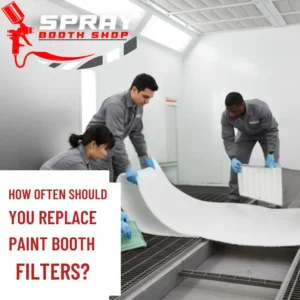 How Often Should You Replace Paint Booth Filters? A Complete Breakdown by Booth Type
How Often Should You Replace Paint Booth Filters? A Complete Breakdown by Booth Type 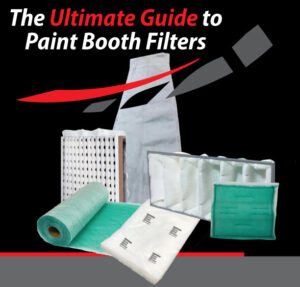 The Ultimate Guide to Paint Booth Filters
The Ultimate Guide to Paint Booth Filters 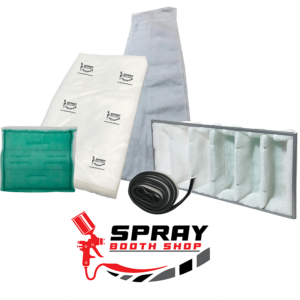 The Importance of Changing Paint Booth Filters: When and Why to Replace Pre-Filters, Ceiling Intake Filters, and Exhaust Filters
The Importance of Changing Paint Booth Filters: When and Why to Replace Pre-Filters, Ceiling Intake Filters, and Exhaust Filters